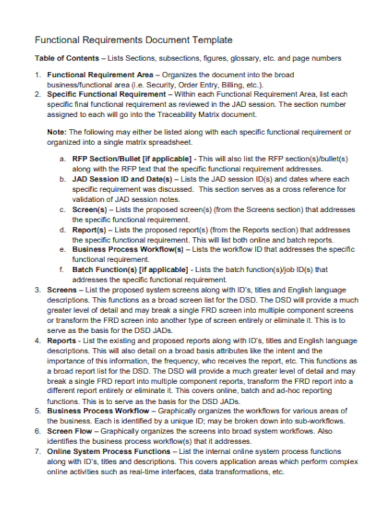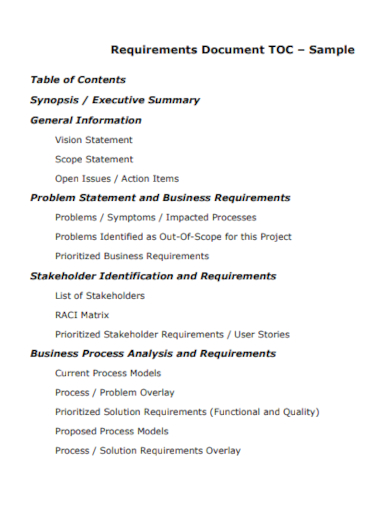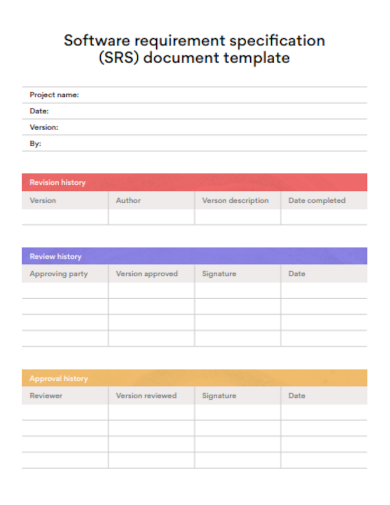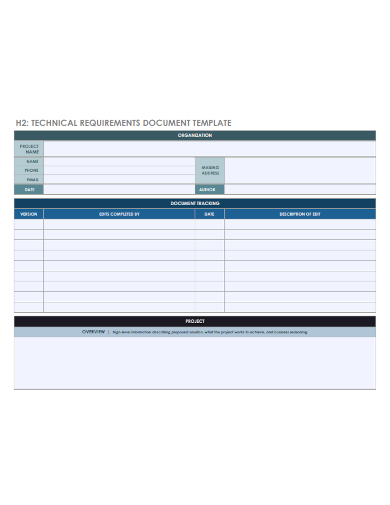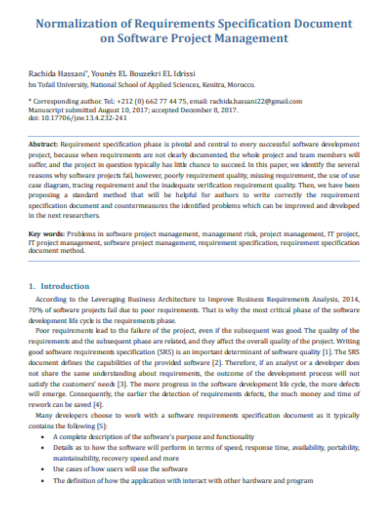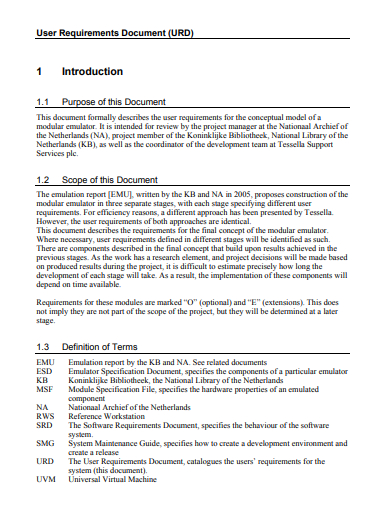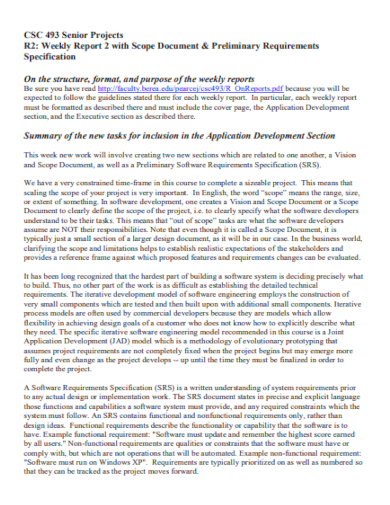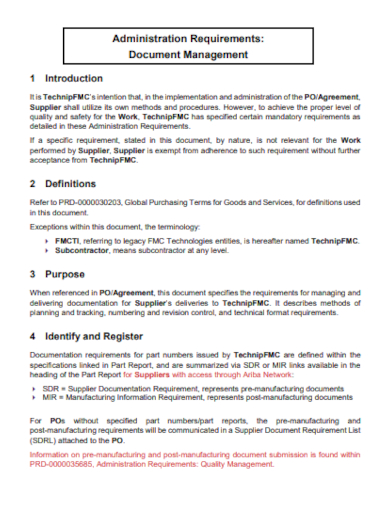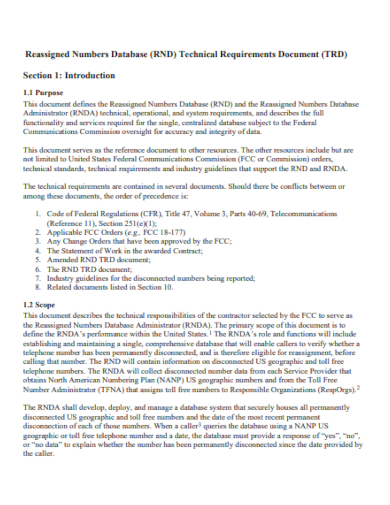Organizations strive to stay competitive and adapt to ever-changing market demands. One crucial element for achieving success is the development and utilization of a Business Requirements Document (BRD). This document serves as a comprehensive blueprint that outlines the necessary objectives, functional specifications, and constraints for a particular business initiative. A requirements document brings together stakeholders from different departments or teams and aligns them towards a common goal. By clearly defining the project scope, deliverables, and timeline samples, it helps minimize conflicts and facilitates cooperation among stakeholders.
20+ Requirements Document Samples
1. Business Requirements Document Template

2. Technical Business Requirements Document Template
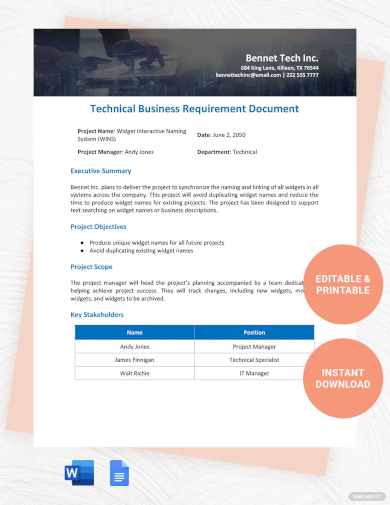
3. Software Business Requirements Document Template
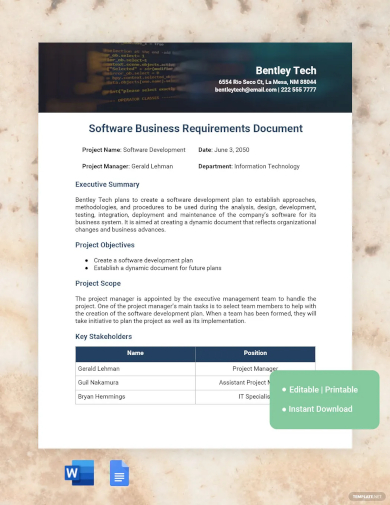
4. Product Business Requirements Document Template

5. Agile Business Requirements Document Template
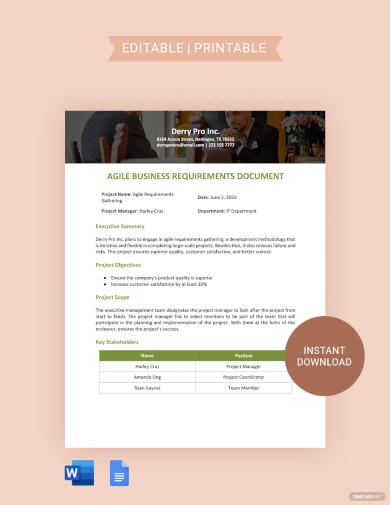
6. Project Requirements Document
7. Requirements Document Template
8. Product Requirements Document
9. Sample Requirements Word Document
10. Software Requirements Specification Document
11. Design Requirements Document Template
12. Technical Requirements Document
13. Requirements Specification Document
14. User Requirements Document
15. Report Requirements Document
16. High Level Requirements Document
17. Preliminary Requirements Scope Document
18. Dashboard Capability Requirements Document
19. Administration Management Requirements Document
20. Operational Process Requirements Document
21. Database Technical Requirements Document
What is Requirements Document?
A Requirements Document, also known as a Business Requirements Document (BRD), is a formal document that outlines the objectives, scope, functional and non-functional requirements, constraints, assumptions, and dependencies of a project or business initiative. It serves as a comprehensive reference and communication tool, capturing the desired features, specifications, and expectations of stakeholders for the development of a solution or the execution of a project.
How To Make Requirements Document?
The document provides a clear understanding of what needs to be accomplished, guiding the project team and ensuring alignment among all involved parties. Creating an effective Requirements Document involves several key steps and considerations. Here is a step-by-step guide to help you develop a comprehensive Requirements Document:
Step 1- Identify Project Objectives
Clearly define the goals and objectives of the project. Understand the problem or opportunity that the project aims to address and articulate the desired outcomes. Identify all the key stakeholders who will be involved or affected by the project. This includes users, customers, project sponsors, management, and any other relevant parties.
Step 2- Conduct Stakeholder Interviews and Workshops
Engage with stakeholders to gather their requirements, expectations, and constraints. Conduct interviews, workshops, or surveys to elicit information and gain a comprehensive understanding of their needs.
Step 3- Document Functional Requirements
Define the specific functionalities and features that the solution should possess. Break them down into clear, concise statements that can be understood by all stakeholders. Use techniques such as use cases, user stories, or process flows to capture functional requirements effectively.
Step 4- Document Non-functional Requirements
Identify and document the non-functional requirements that define the quality attributes, constraints, and performance expectations of the solution. These may include factors such as security, scalability, performance, usability, and regulatory compliance.
Who creates the Requirements Document?
The Requirements Document is typically created by business analysts, project managers, or a dedicated requirements gathering team. They collaborate with stakeholders, subject matter experts, and development teams to gather and document the necessary requirements.
How detailed should the Requirements Document be?
The level of detail in a Requirements Document can vary depending on the project and its complexity. However, it should provide sufficient information for the development team to understand and implement the solution accurately.
How often should the Requirements Document be reviewed?
The Requirements Document should be reviewed and updated regularly throughout the project. It is important to validate and verify requirements with stakeholders and ensure they remain accurate and aligned with project goals.
In the fast-paced and competitive business landscape, a well-structured and comprehensive Business Requirements Document is essential for success. It enables clear communication, aligns stakeholders, and ensures that the resulting solution meets the desired objectives. By defining project scope, identifying functional and non-functional requirements, and outlining constraints and risks, a BRD serves as a roadmap for effective project execution.
Related Posts
Retirement Speech Samples & Templates
Weekly Schedule Samples & Templates
Contractual Agreement Samples & Templates
FREE 9+ Amazing Sample Church Bulletin Templates in PSD | PDF
Sample Business Card Templates
Sample Cashier Job Descriptions
Questionnaire Samples
FREE 10+ Sample HR Resource Templates in PDF
FREE 49+ Sample Job Descriptions in PDF | MS Word
FREE 23+ Sample Event Calendar Templates in PDF | MS Word | Google Docs | Apple Pages
Company Profile Samples
FREE 10+ Leadership Report Samples [ Development, Training, Camp ]
FREE 24+ Sample Payment Schedules in PDF | MS Word
FREE 10+ Return to Work Action Plan Samples in PDF | DOC
Autobiography Samples & Templates


